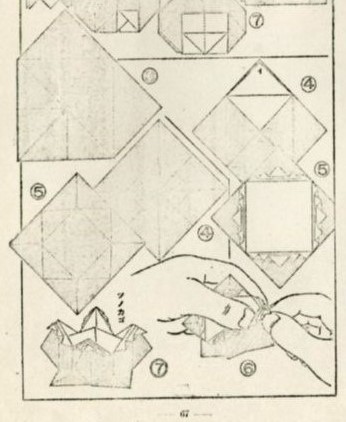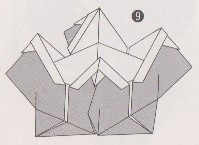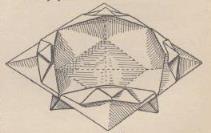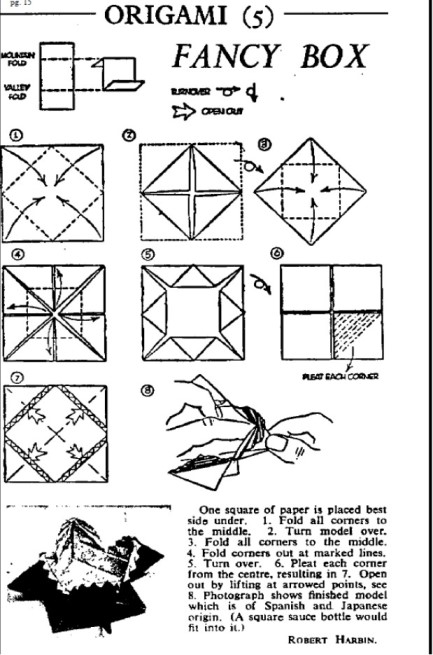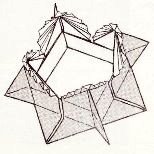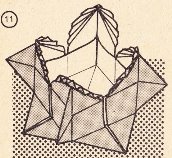| The Public Paperfolding History Project
Last updated 16/7/2024 x |
|||||||
| The Spanish Box | |||||||
| This
page is being used to collect information about the
history of the paperfolding design commonly known as the
Spanish Box, of whichthere are several decorative
variants. Please contact me if you know any of this
information is incorrect or if you have any other
information that should be added. Thank you. ********** In Japan (and in books by Japanese authors) 1944 In 'Origami Shuko' by Isao Honda, which was published in 1944.
********** The design also appears: 1965 In 'The World of Origami' by Isao Honda, which was published in the USA by Japan Publications Trading Company in 1965,in a slightly less decorative version which is called the 'Flower-shaped Candy Cup'.
********** In Europe and the Americas 1910 As far as I know a description, but without illustration, of how to fold this design first appears, under the title 'Another May Basket', in 'Studies in Invalid Occupation' by Susan E Tracy, which was published by Whitcomb and Barrows in Boston in 1910. ********** 1940 'El Plegado y Cartonaje en la Escuela Primaria' by Antonio M Luchia and Corina Luciani de Luchia was published by Editorial Kapelusz in Buenos Aires in 1940 contains a two designs called 'Bandeja' and 'Canastilla' (Tray and Layette) which are both versions of the Spanish Box design which have not been fully three-dimensionalised.
********** 1960 Robert Harbin published a more decorative version of the same design in 'The Observer' of 27th March 1960.
********** The design also appears: 1964 As 'Fancy Box' in 'Secrets of Origami', by Robert Harbin, which was published by Oldbourne Book Company in London in 1964. The basic box is said to be Japanese and the pleating Argentinian.
********** 1968 As 'Spanish Box', in 'Teach Yourself Origami: The Art of Paperfolding' by Robert Harbin, which was published by The English Universities Press in 1968, where it is said to be Spanish, originally Japanese.
********** |
|||||||
